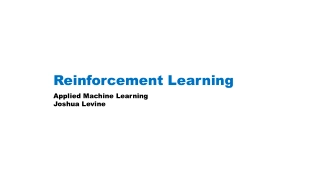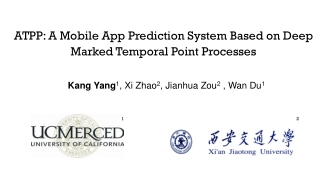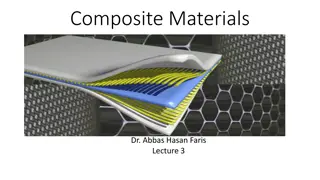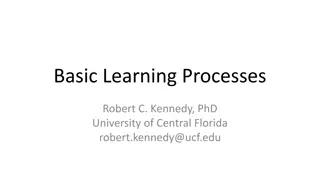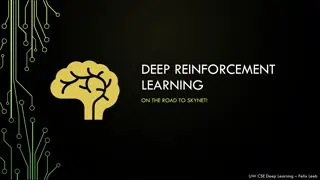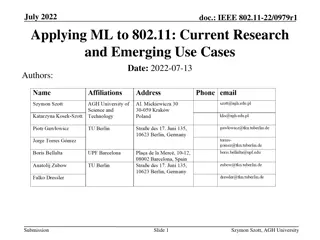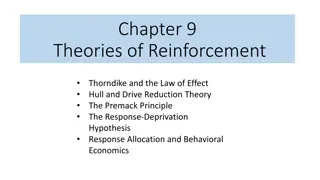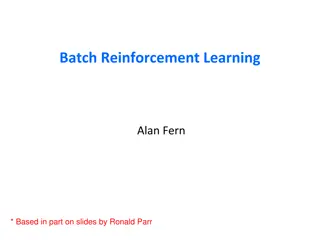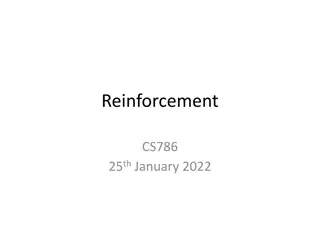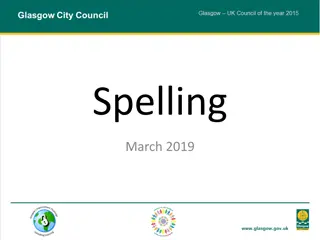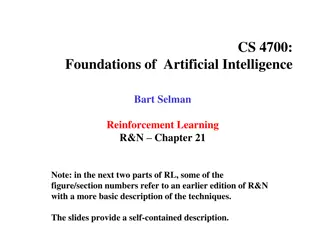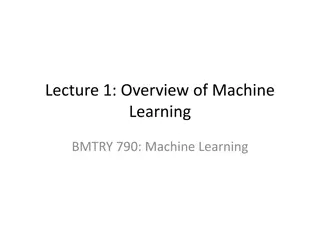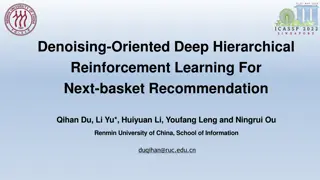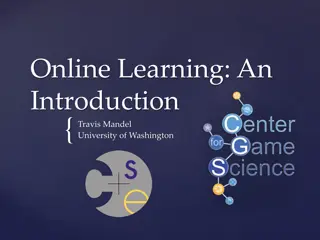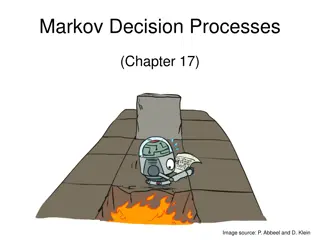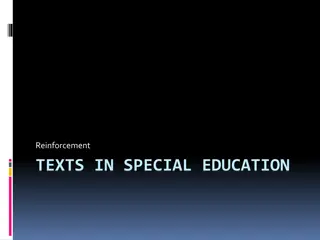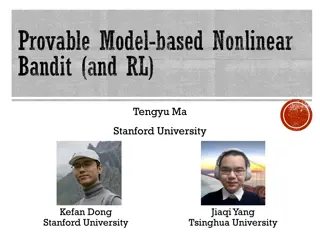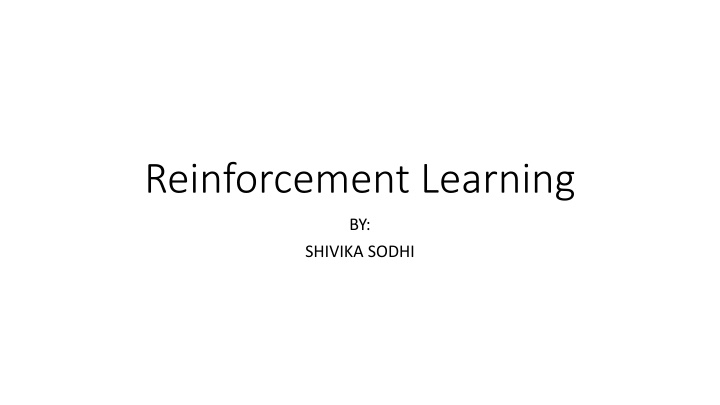
Reinforcement Learning: A Comprehensive Overview
Reinforcement learning explores how agents learn from rewards to make decisions without labeled examples. It involves learning an optimal policy based on observed rewards, utilizing methods like utility-based design and Q-learning. The concept of passive reinforcement learning aims to assess the effectiveness of a fixed policy. Direct utility estimation simplifies the learning process by reducing it to an inductive problem, although convergence can be slow.
Download Presentation

Please find below an Image/Link to download the presentation.
The content on the website is provided AS IS for your information and personal use only. It may not be sold, licensed, or shared on other websites without obtaining consent from the author. If you encounter any issues during the download, it is possible that the publisher has removed the file from their server.
You are allowed to download the files provided on this website for personal or commercial use, subject to the condition that they are used lawfully. All files are the property of their respective owners.
The content on the website is provided AS IS for your information and personal use only. It may not be sold, licensed, or shared on other websites without obtaining consent from the author.
E N D
Presentation Transcript
Reinforcement Learning BY: SHIVIKA SODHI
INTRODUCTION Study - How agents can learn what to do in the absence of labeled examples. Ex. In chess, a supervised learning agent needs to know about every correct move, but that feedback is seldom available. Without a feedback of good/bad, the agent will have no ground for deciding what move to make. It needs to know If it (accidentally) checkmates: good or gets checkmated: bad. This kind of feedback is called reward/reinforcement reward/reinforcement. The agent must be hardwired to recognize reward vs normal input
INTRODUCTION Reinforcement learning uses observed rewards to learn an optimal policy. Eg. Playing a game whose rules you don t know, and after a few moves, your opponent announces you lose . Feasible way to train a program to perform at high levels The program can be told when its won or lost, use this info to learn an evaluation function evaluation function that gives accurate estimates Agent designs: Utility based Utility based: Uses a learnt utility function on state, to select actions that maximize the expected outcome utility Q Q- -learning learning: learns action utility function, giving the expected utility Reflex agent Reflex agent: learns a policy that maps directly from states to actions
INTRODUCTION Utility-based agent must have a model of environment to make decisions, as it must know the states to which its actions will lead. Ex. To make use of a backgammon evaluation function, a backgammon program, must know what its legal moves are and how they affect the board position. (thus it can apply the utility function to the outcome states) Q- learning agent doesn t need a model of environment as it can compare the expected utilities for its available choices without needing to know their outcomes. They can t look ahead as they don t know where their actions will lead
PASSIVE REINFORCEMENT LEARNING Agent s policy is fixed. Goal is to learn how good the policy is [Upie(s)] This agent doesn t know reward function or transition model. P(s |s,a) Direct utility estimation: Utility of a state is the expected total reward from that state onward. Each trial provides a sample of this quantity for each state visited. At the end of each sequence, the algo calculates the observed reward- to-go as output.
Direct utility estimation Instance of supervised learning, input: state, output: reward-to-go Succeeds in reducing the reinforcement learning problem to an inductive learning problem, (which is known) Utility (each state) = own reward + utility (successor state) Utilities are not independent, this model ignores that. Hence this algorithm converges very slowly.
Adaptive Dynamic Programming An ADP agent takes advantage of the constraints among the utilities of states by learning the transition model that connects them and solving the corresponding Markov decision process using a dynamic programming method. Plugging the learned transition model and observed rewards into Bellman equation to calculate the utilities of the states. Equations are linear. Value iteration process can use previous utility estimates as initial values and should converge quickly.
Temporal Difference learning Solving the underlying MDP is not the only way to bring the Bellman equations to bear on the learning problem. Instead, use observed transitions to adjust utilities of observed states so that they agree with constraint equations. This rule is called temporal difference because it uses the differences in utilities between successive states TD doesn t need a transition model to perform its updates.
ACTIVE REINFORCEMENT LEARNING An active agent must decide what to take. The agent will need to learn a complete model with outcome probabilities for all actions rather than just the model for fixed policy.
GENERALIZATION IN REINFORCEMENT LEARNING
APPLICATIONS OF REINFORCEMENT LEARNING

